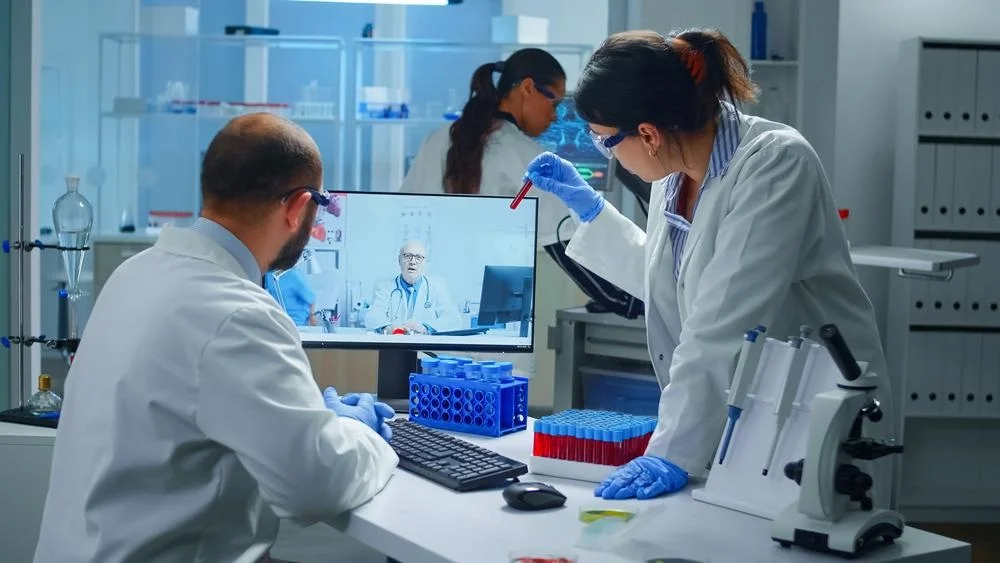In the midst of rapid changes in the healthcare field, data integration has become a key factor in improving patient care outcomes. One area where this integration is particularly important is in coordinating data from In Vitro Diagnostic (IVD) devices in hospital facilities or clinics. Utilizing Laboratory Information Systems (LIS) to merge and manage this data not only simplifies processes but also plays a fundamental role in enhancing diagnostic accuracy and treatment efficacy.
As previously discussed in-depth, LIS or Laboratory Information Systems function as platforms designed to manage and organize data generated from various laboratory tests, including those conducted using IVD devices. These systems facilitate efficient tracking of patient samples, workflow automation, and smooth communication between different departments in healthcare facilities.
The Importance of Data Integration from IVD Devices:
- Improved Diagnostic Accuracy: Integrating data from IVD devices into LIS allows for comprehensive analysis of patient results over time. This dataset also enables healthcare providers to detect trends, identify anomalies, and make more accurate diagnoses.
- Enhanced Treatment Planning: Access to integrated data allows doctors to develop personalized treatment plans tailored to individual patient needs (personalized medicine).
- Efficient Workflow Management: Integrating IVD device data into LIS streamlines laboratory workflows by automating result reporting, reducing manual data entry errors, and optimizing examination times. This efficiency results in faster diagnosis and treatment initiation, ultimately benefiting patient care.
- Seamless Collaboration: LIS integration facilitates uninterrupted collaboration among healthcare provider teams by providing access to standardized, centralized patient data. This fosters interdisciplinary communication, such as between doctors, laboratory analysts, and pharmacists.

There are two types of IVD devices: bi-directional and mono-directional, referring to the devices' ability to interact with the Laboratory Information System (LIS) in two directions or only one direction.
- Bi-directional IVD Devices: These devices have the ability to send and receive data from LIS. This means that these devices can not only send test results to LIS for archiving and further analysis but also receive instructions or commands from LIS.
- Mono-directional IVD Devices: These devices can only send data to LIS or only receive instructions from LIS, but cannot perform both simultaneously. This means that these devices can only function in one-way communication with the laboratory information system.
When choosing IVD devices to be integrated with LIS, it is important to consider the specific needs of healthcare facilities and laboratory workflows. Bi-directional IVD devices are often considered more flexible and can improve efficiency in laboratory workflows by enabling two-way interaction between the device and the information system.
The integration of data from IVD devices into LIS is a crucial step towards optimizing healthcare delivery in hospital facilities and clinics. By integrating patient information, improving diagnostic accuracy, and enhancing treatment planning, this integration empowers healthcare providers to deliver more efficient, personalized, and patient-centered care. Isotekindo has a Laboratory Information System (LIS) called FortaceDx LIS which is capable of integrating with various medical devices such as the FortaceDx K100 or K200 chemistry analyzer and the FortaceDx H380 hematology analyzer.
Reference:
- Suseno, Wachid Joko (Kemenkes RI). (2023). Menerapkan Laboratory Information System (LIS) Integrated Technology.
- Kementerian Kesehatan RI. (2011). Direktorat Jenderal Bina Kefarmasian dan Alat Kesehatan Pedoman interpretasi data klinik,Jakarta : Kementerian Kesehatan RI.
- Smith, J., & Jones, A. (2020). "The Importance of Blood Chemistry Tests in Modern Healthcare." Journal of Medical Diagnostics, 15(2), 120-135.


